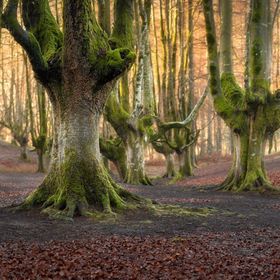Views
1721
Likes
Awards
Zenith Award
Featured
Community Choice Award
Peer Award
Superb Composition
Top Choice
Absolute Masterpiece
Outstanding Creativity
Magnificent Capture
Superior Skill
All Star
Virtuoso
Genius
Emotions
Impressed
Top Ranks
Categories
Same photographer See allBehind The Lens
Discover more photos See all
Behind The Lens
Location
This photo is taken on a small rocky beach on the Lofoten islands in northern Norway.Time
Like so many of my favourite photos, this one is taken after the sun has set. In my opinion the best part of a good sunset often comes after the sun has disappeared below the horizon. Above the arctic circle in the summer time, this means very late in the day and sometimes well into the night!Lighting
Since Lofoten is so far north, the wonderful post-sunset light lingers a long time after sunset (in the summer months). I was hoping for less clouds on the horizon, but I ended up very happy with how the post-sunset glow is only visible as a line on the horizon here.Equipment
I shot this on my Olympus OMD E-M1 II, a fantastic camera for landscape photography, especially for long days of hiking in the mountains. The lens is my main workhorse; the Olympus 12-40/2.8 PRO. For long exposures like this one a sturdy tripod is also good to have around, expecially when the legs are in the water like on this shot. I usually try shots like this both with and without a circular polarizer; you never know if the glare on the rocks end up helping or hurting the overall image. For this shot I think I used a polarizer, but it was set to a quite small degree of polarization.Inspiration
I had spent the whole day hiking in the mountains, and once we got comfortable in our Air BnB for the night, it took everything I had not to stay in and miss what looked like an overcast and uninspiring sunset. In the end the urge to see what was out there won over the comfort of the warm room, so I laced up my boots again and grabbed the camera bag for a short walk along the nearby coast. The sunset wasn't spectacular that night, but the clouds left enough gap to let some light through, and the jagged, rocky coast had so much to offer in terms of foreground!Editing
Shots like this (seascapes after the sun has set) usually don't require that much post processing. The dynamic range isn't big enough that exposure blending is needed, and this particular photo already had a pretty good color palette. I like scenes (or edits) where there aren't too many different colors competing for attention. In this case the contrast of the yellow algae on the almost black rocks works really well with the pale orange light from the sunset, and I've done my best to emphasize that during post processing.In my camera bag
I like to stay fairly lightweight (for a landscape photographer at least!), but there are a few items that are always with me when hiking: - An Olympus m4/3 camera body. Mostly the EM-1 II, but sometimes the even smaller and lighter E-M10 gets to come along instead. - The Olympus 12-40mm/f2.8 PRO standard zoom - The Laowa 7.5mm/f2 ultra wide prime - A long lens, usually the Olympus 75-300. - Circular polarizer, 6 stop ND, 10 stop ND - Benro carbon fibre tripod with ball headFeedback
Study google earth (or paper maps) for coastal areas with rocky beaches for the foreground, and some sort of interesting background feature (mountains, in this case), and then be there about an hour or so before sunset. Make sure you stay at least an hour or so after sunset, as this is usually when the really magic light comes out, in my experience! The entire study-maps part can be skipped if you are in a place like Lofoten though; I feel that almost every direction I point my camera in there has potential for amazing shots! If you want your landscape photos to be beautiful, go stand in front of beautiful stuff :)













































